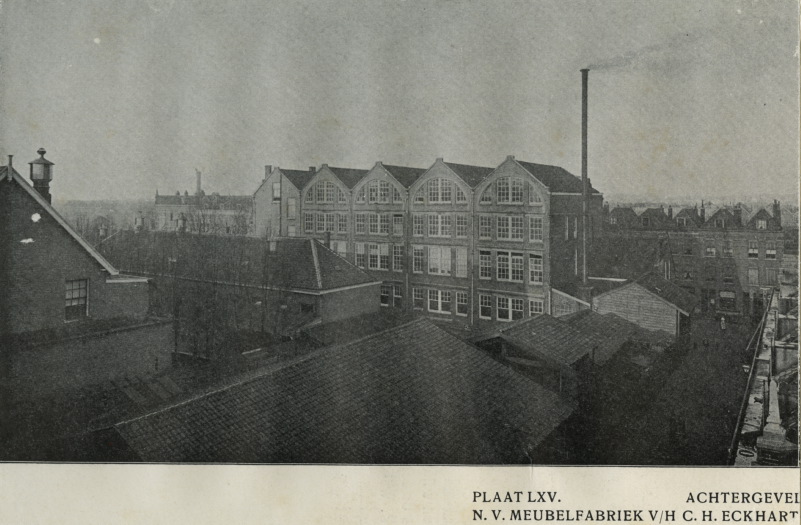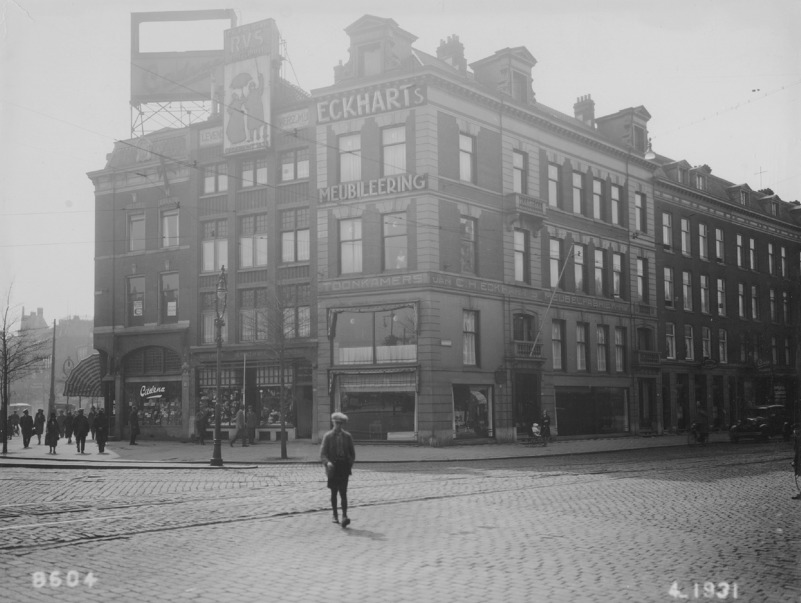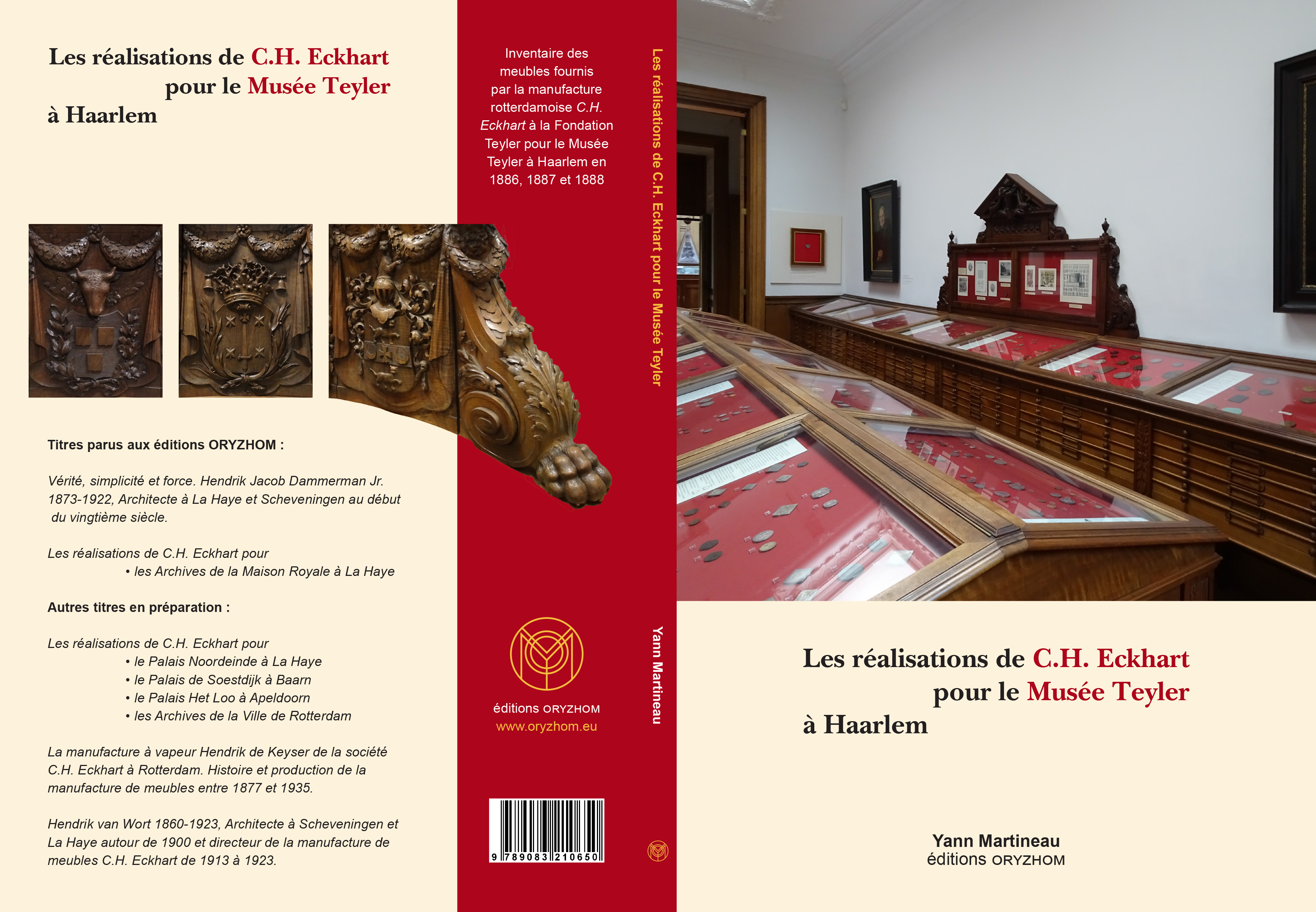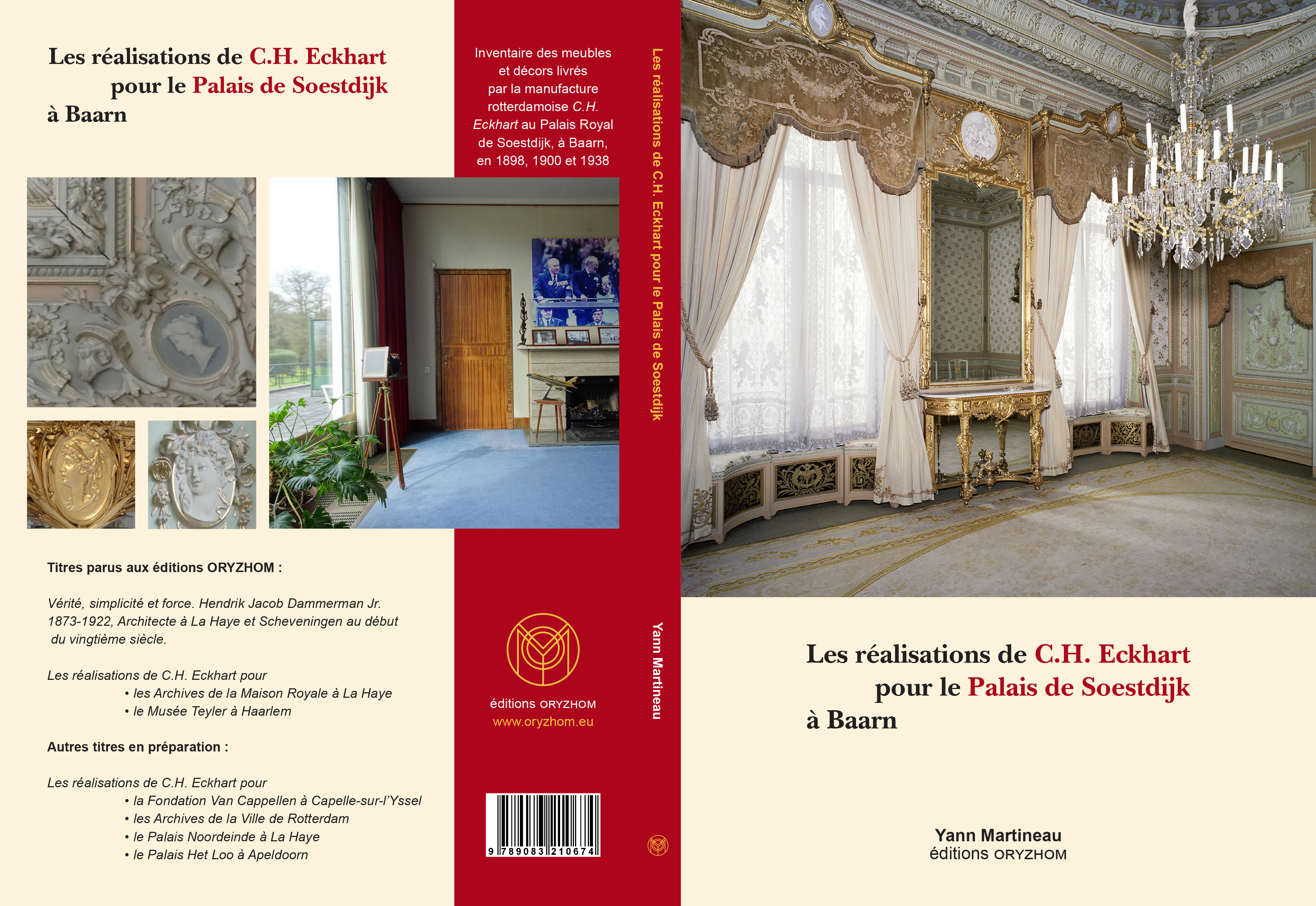The Rotterdam Furniture Factory C.H. Eckhart
Founded in Rotterdam in 1870 by Christiaan Hendrik Eckhart (1847-1896), the frame and mirror factory C.H. Eckhart developed in 1877 with the construction of a steam factory in the Crooswijk district. Led by Christiaan Hendrik Eckhart and his brother-in-law Gerhard Arnold Martin Rijken (1852-1913), the company quickly extended its skills to all activities involved in interior design: design and/or production and/or installation of mirrors, furniture, wall, fireplace and ceiling woodwork, curtains, carpets, tablecloths, suspension and closing fittings, application of painting and sculpture to interior and exterior decoration, trade in mirror glass, fabrics, trimmings, chandeliers and lighting fixtures, etc. In 1891, the factory had more than 130 employees. In 1895, the factory supplied furniture to the Noordeinde Palace and from then on worked regularly for the Royal House of Orange-Nassau. Between 1877 and 1935, the factory also responded to major public orders, fitting out and furnishing numerous representation spaces in universities, ministries, government buildings, town halls, theaters, museums, etc. It operates throughout the Netherlands. It also worked on the interior of numerous boats for the Rotterdam shipyards. The manufacture also targeted private customers and opened stores in Rotterdam, Utrecht and The Hague.
The steam factory Hendrik de Keyser (1877-1935)
The development of the C.H. Eckhart company took a leap in 1877 when Christiaan Hendrik Eckhart left his workshop in the city center to build a steam factory in the Crooswijk district, then at the cutting edge of modernity.

After the death of Christiaan Hendrik Eckhart in 1896, the manufacture continued its development under the direction of Gerhard Arnold Martin Rijken. Officially a limited company from 1906, the factory remained in the hands of the same family until 1968. Gerhard Arnold Martin Rijken remained director until his death in 1913. Hendrik van Wort (1860-1923) who had married in 1897 Christina Hendrika Eckhart (1873-1949), second daughter of Christiaan Hendrik Eckhart from his first marriage, took over and was in charge until his death in 1923. On this date, management of the company was taken over by Hendrik van Wort Jr. (1902-1970) and Christiaan Hendrik van Wort (1904-1963), the two sons of Christina Hendrika Eckhart and Hendrik van Wort.
The steam factory Hendrik de Keyser operated in the Crooswijk district until 1935, when the Eckhart company moved production to Schiedam.
The large showroom on Diergaardelaan (1917-1940)

Since 1917, the company had a large exhibition store in the city center of Rotterdam on Diergaardelaan 2 (address now disappeared, approximately located near Hofplein, on the central station side coming from Coolsingel). It was at this address that the company had its offices and archives when the building disappeared under the German bombs which destroyed a large part of the city center of Rotterdam in May 1940.
Track game
The disappearance of the historical archives of the C.H. Eckhart company in the German bombing of Rotterdam in May 1940 explains the tiny place occupied until now by C.H. Eckhart in specialized publications, comparing to the companies Horrix, Mutters or Pander, including material more abundant and more accessible archives could be exploited, since the 1970s, in particular by Van Voorst tot Voorst whose work on Dutch furniture from the second part of the 19th century is still a reference.
Following his research work on the architect Hendrik Jacob Dammerman Jr. (1873-1922), Yann Martineau launched similar work on the architect Hendrik van Wort (1860-1923) in December 2022. On this occasion he discovered the name of the C.H. Eckhart furniture factory and then set out to gather as much information as possible about the C.H. Eckhart company, in order to be able to understand its history and the place occupied by Hendrik van Wort in its development.
Although the company's archives have disappeared, many other sources can be used and allow us to reconstruct a large part of the history of the factory. The exhaustive exploitation of press clippings and the bibliography (we salute the extraordinary work of Hans van Herwijnen on the decorative painter Willem Adrianus Fabri 1853-1925, head of the painting studio of C.H. Eckhart from 1877 to 1893 and who continued his collaborations with the furniture factory until 1905) allowed us to establish a first list of projects to which the factory contributed. A real game of clues then begun to find in customer archives - when these archives are accessible - traces of orders placed with C.H. Eckhart.
Following this meticulous research work carried out since 2023 by Yann Martineau in the Archives of the City of Rotterdam, in the Dutch National Archives, in the Royal Archives in The Hague and in the Archives of the Teyler Foundation in particular, ORYZHOM publishing is preparing a series of books: a book on the history of the C.H. Eckhart factory and a series of inventories which each focus on an exceptional place to which the factory has contributed.
The first three inventories are already available
Each book is an opportunity to (re)discover the building and its history, to understand the original layout, and to place the objects in their historical context.
The first inventories deal with C.H. Eckhart's contributions for the Archives of the Royal House in The Hague (March 2024), the Teylers Museum in Haarlem (October 2024) and Soestdijk Palace in Baarn (September 2025).
You can download the catalog of ORYZHOM publishing. All our titles are available in French and Dutch. Please contact us with any questions or orders at editions@oryzhom.eu.


